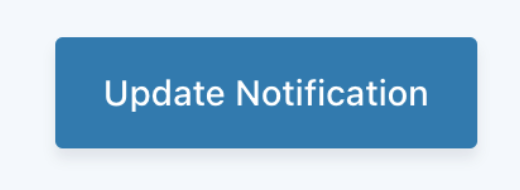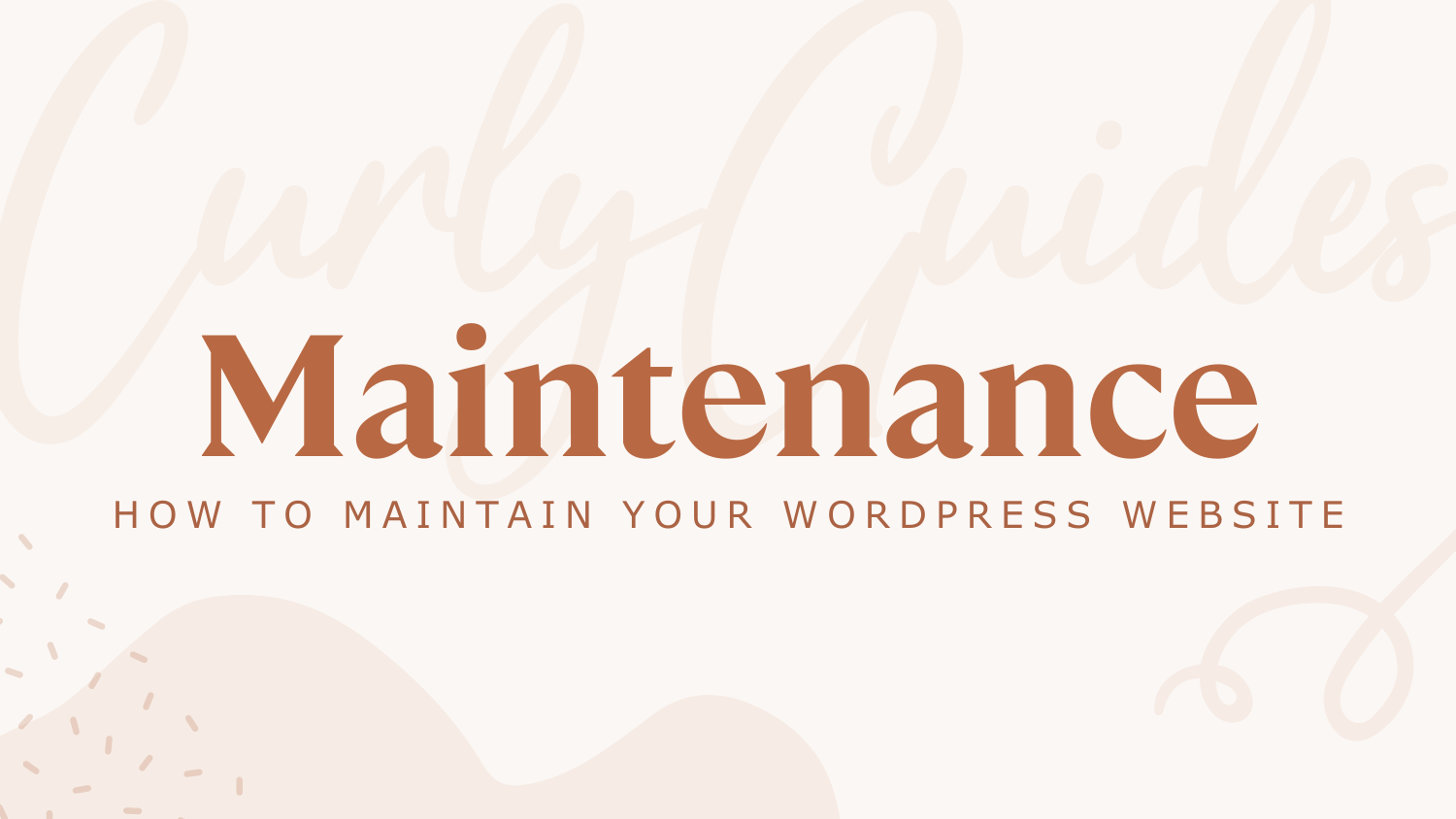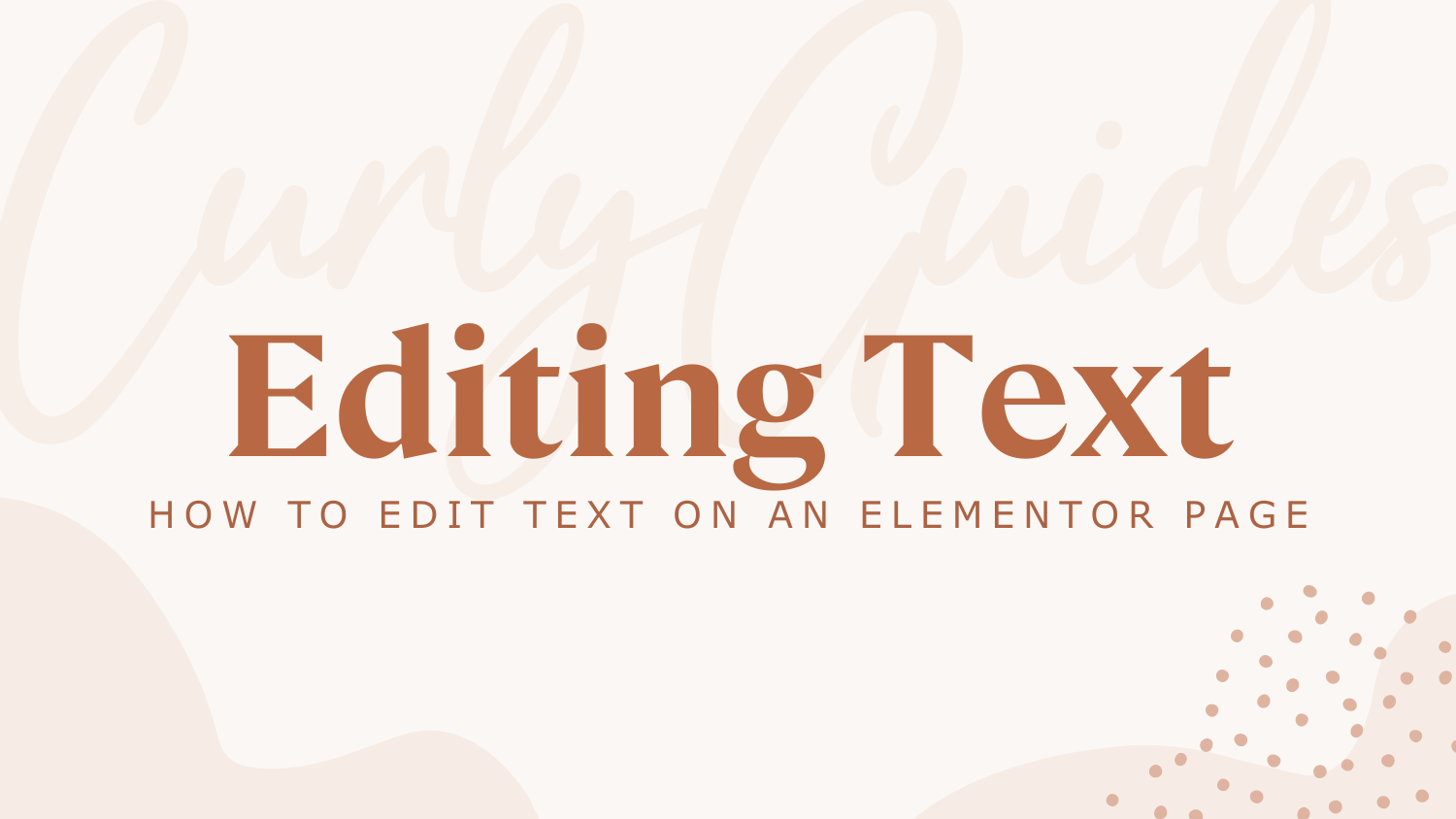Quick Guide Links:
Updating WordPress
WordPress is the software that allows you to build a website and manage the content behind the scenes in a content management system.
To check for updates, log in to the admin area of your website and go to Dashboard > Updates. At the top of the page, you will see the info for your current version of WordPress.
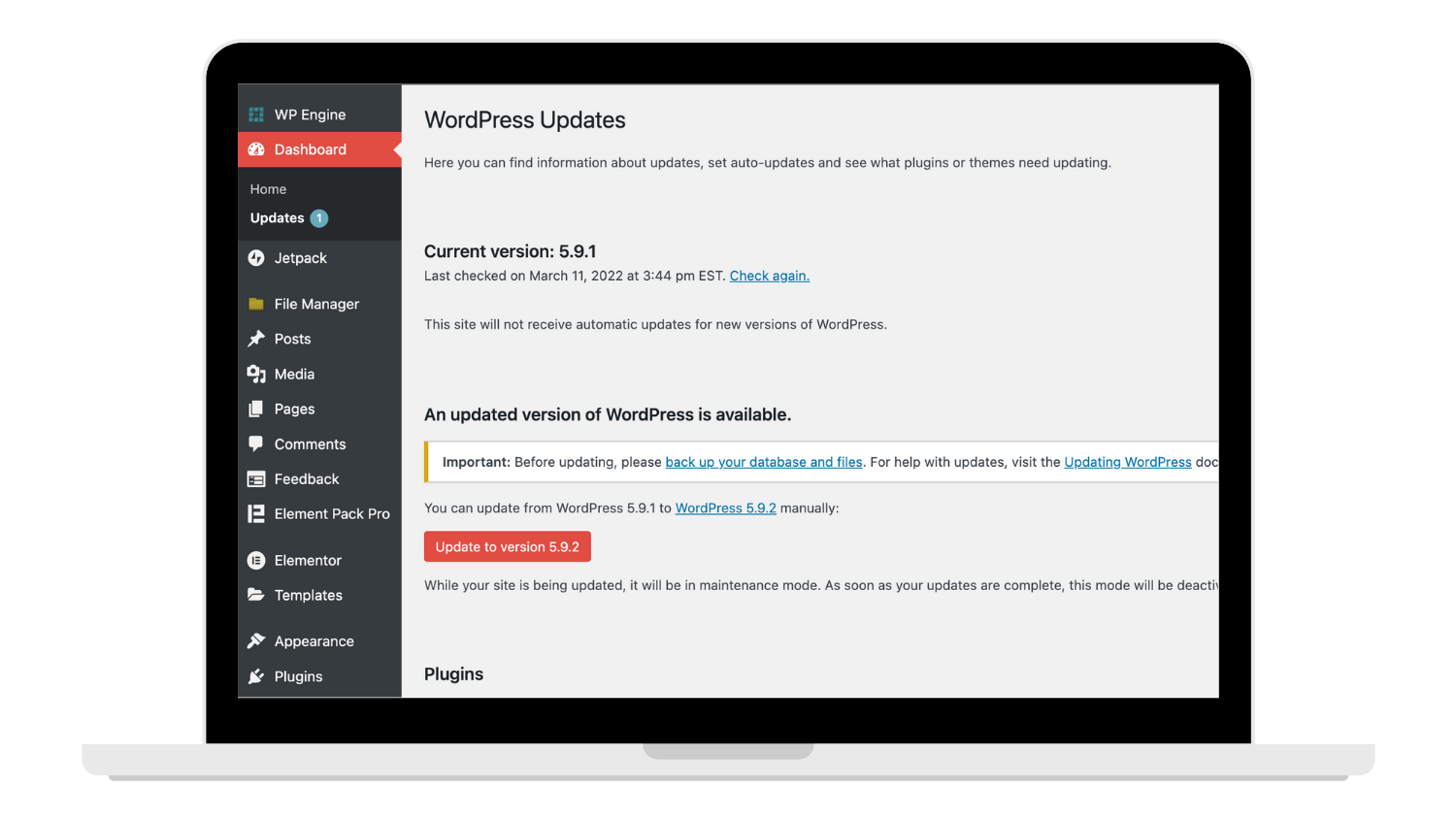
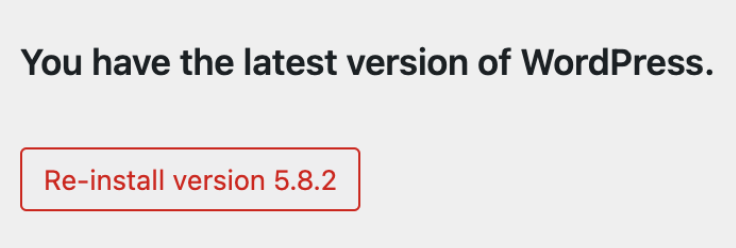
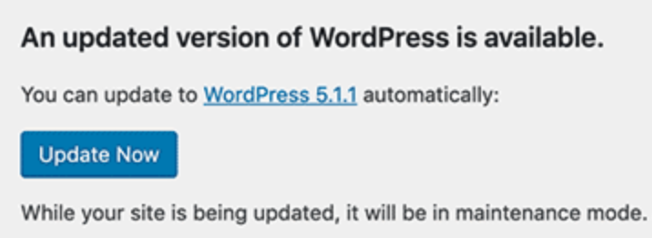

Updating Plugins
Plugins are WordPress software extensions that give your website handy bits of functionality like event listings, form options, or products & shops. Plugin developers are constantly working on keeping their software up to date with WordPress and offering new options to keep their plugin relevant. Plugins are the most common updates your website needs.
To check for updates, log in to the admin area of your website and go to Dashboard > Updates. Below the WordPress version information, you will see the info regarding your current plugins.
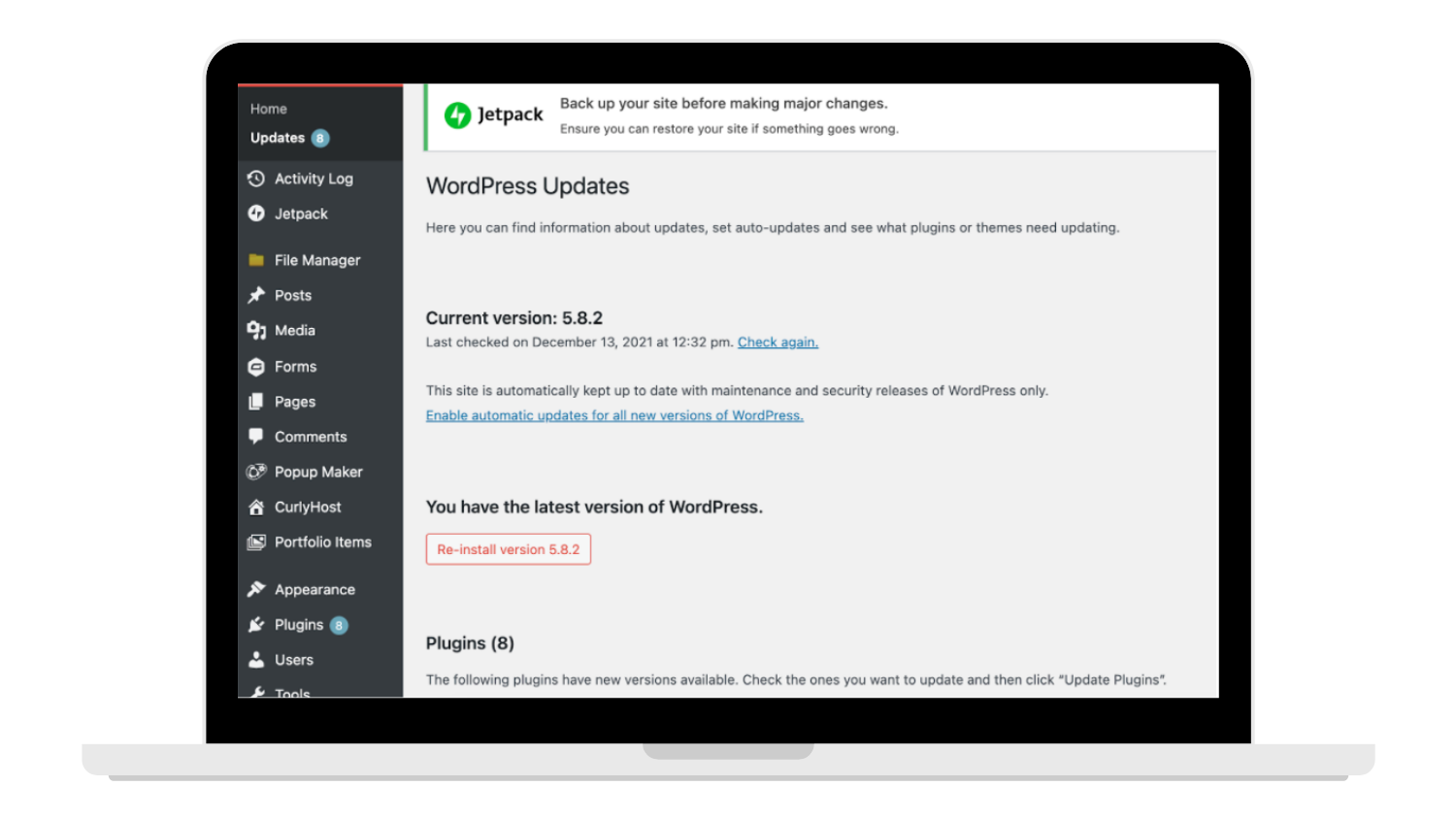
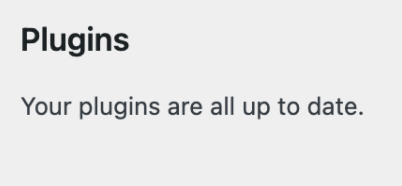
If you have plugins that need updating, you will see a list view of each plugin that needs to be updated.
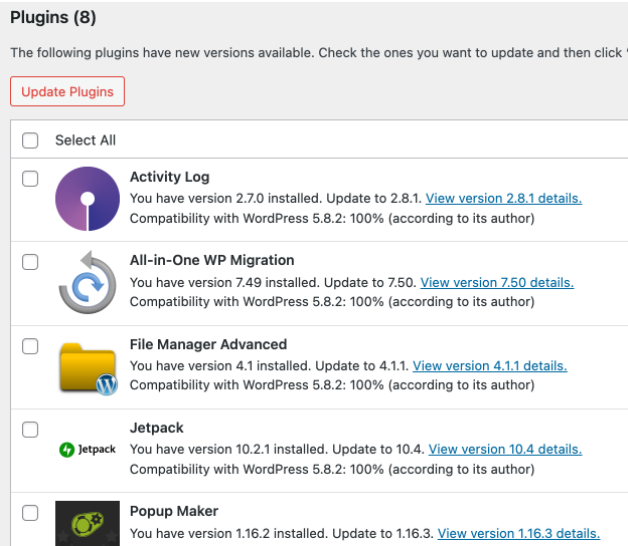

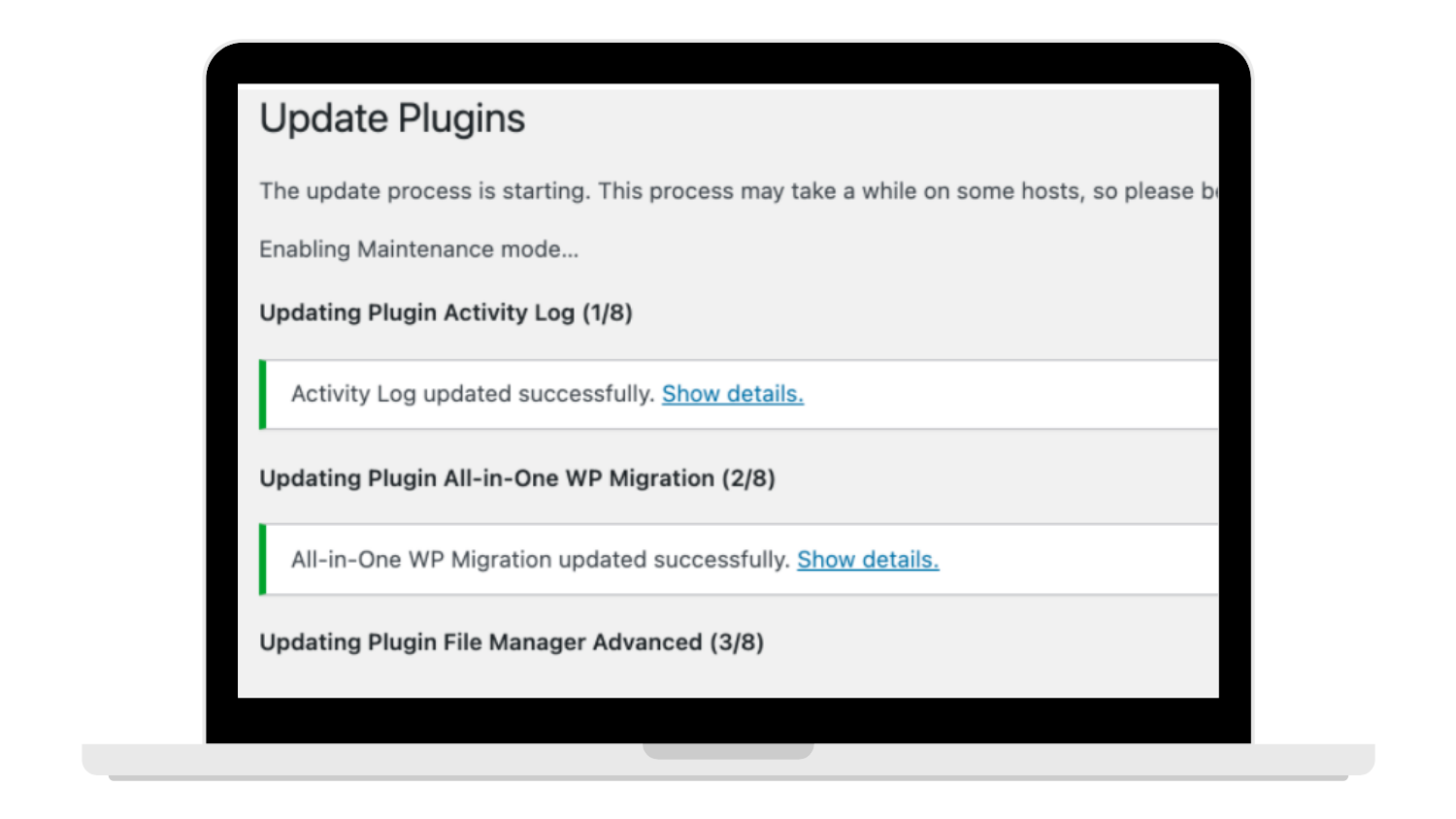
Updating Themes
Themes are what give your site its mojo. All the colors, styles, fonts, and layout settings are set in your website’s theme.
To check for updates, log in to the admin area of your website and go to Dashboard > Updates. At the bottom of the page, you will see the info for your current theme. If your themes are up to date, you will see a message telling you just that.
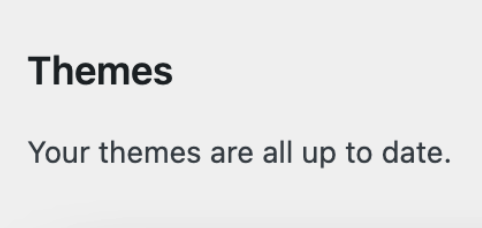
If you have a theme that needs updating, you will see a list view of each theme that needs to be updated.
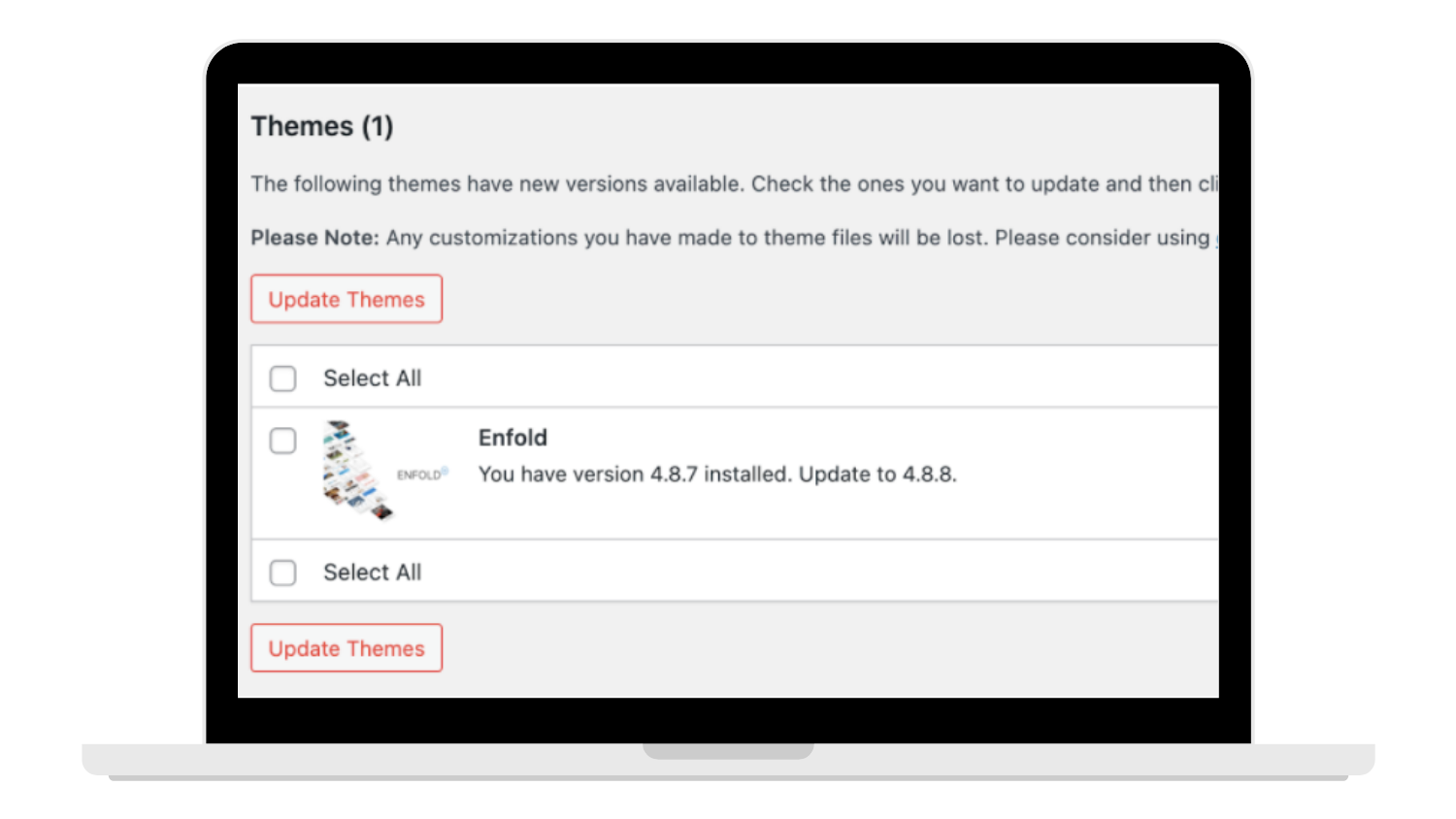
Check the box to select the theme and click the ‘Update Themes’ button.
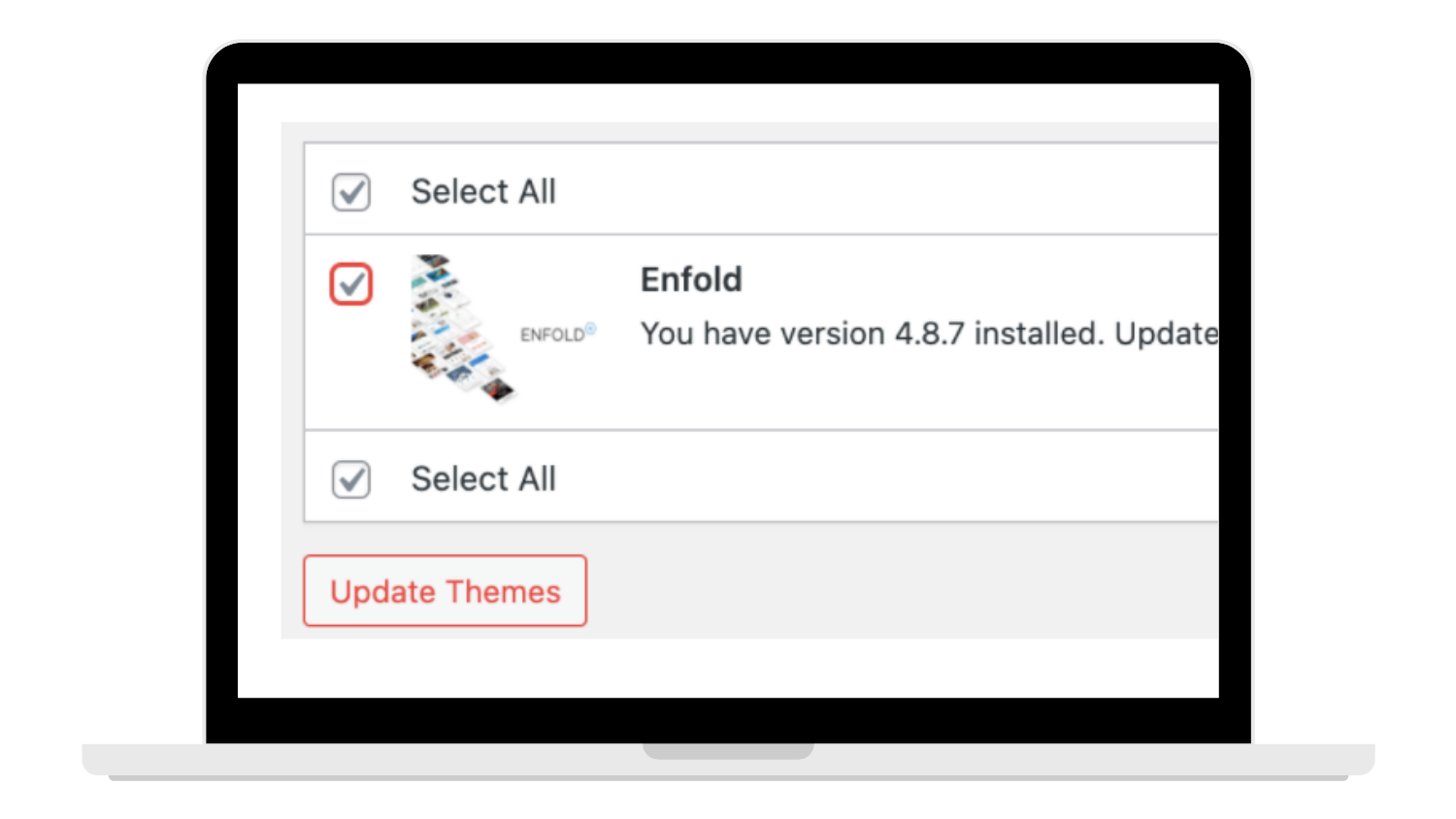
This will start the automatic process of updating your theme. Your website will shift to maintenance mode while the update is running and you will see a success message when the update is complete and your site is back to normal.
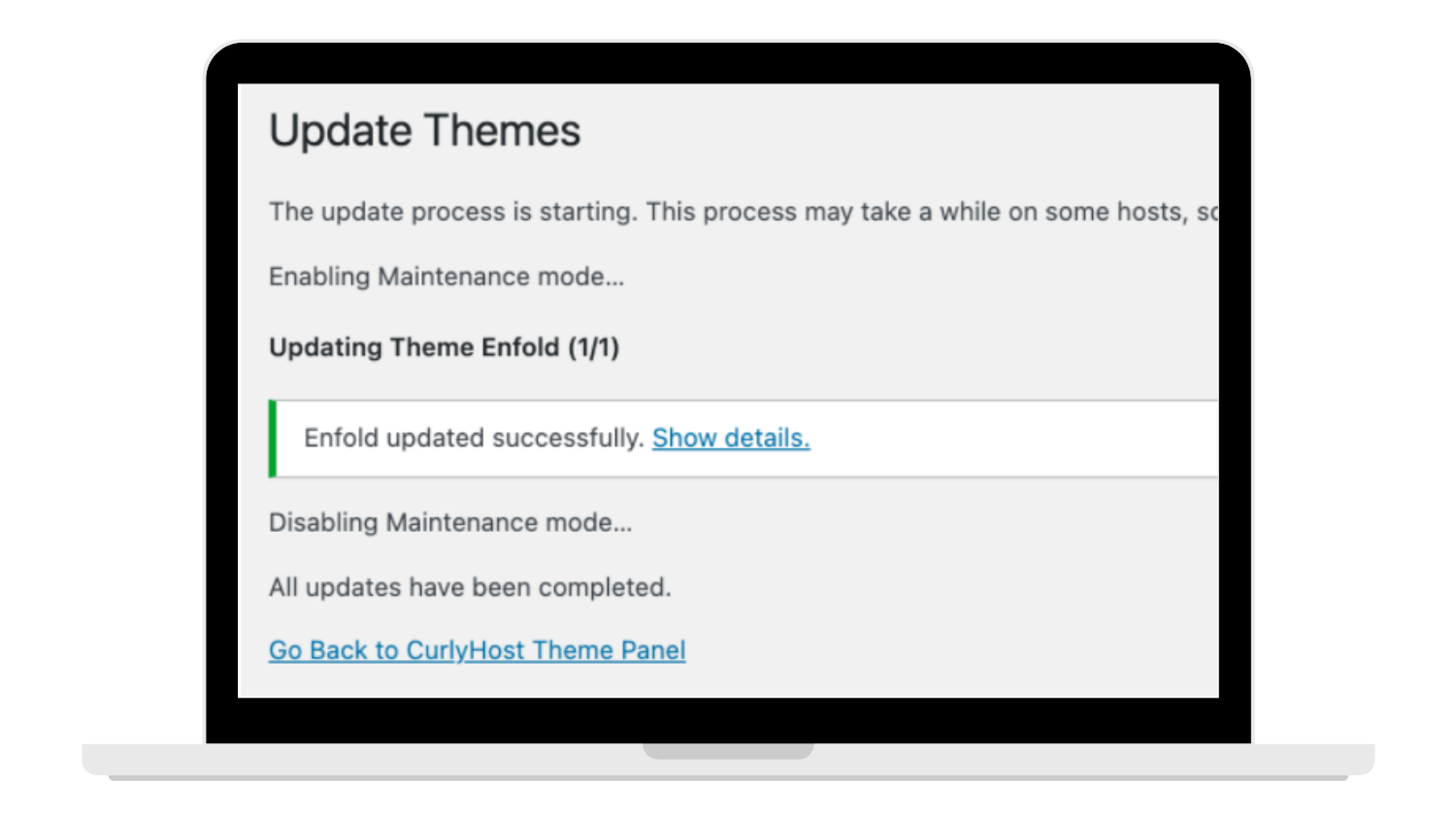
Updating Form Notifications
At CurlyHost, we build websites with two primary types of form builders, Elementor and Gravity Forms.
If your website uses Elementor, you will see an ‘Elementor’ tab in the admin dashboard of your site. If you have this tab, skip to the instructions below for Elementor forms.


Elementor Forms
To update form notifications for an Elementor form, navigate to the page editor where the form is displayed. A common example of this is a contact page. Using a contact page as an example, login to the admin dashboard of your website and navigate to Pages > Contact (or any other page where your form is displaying), and click ‘Edit with Elementor.’

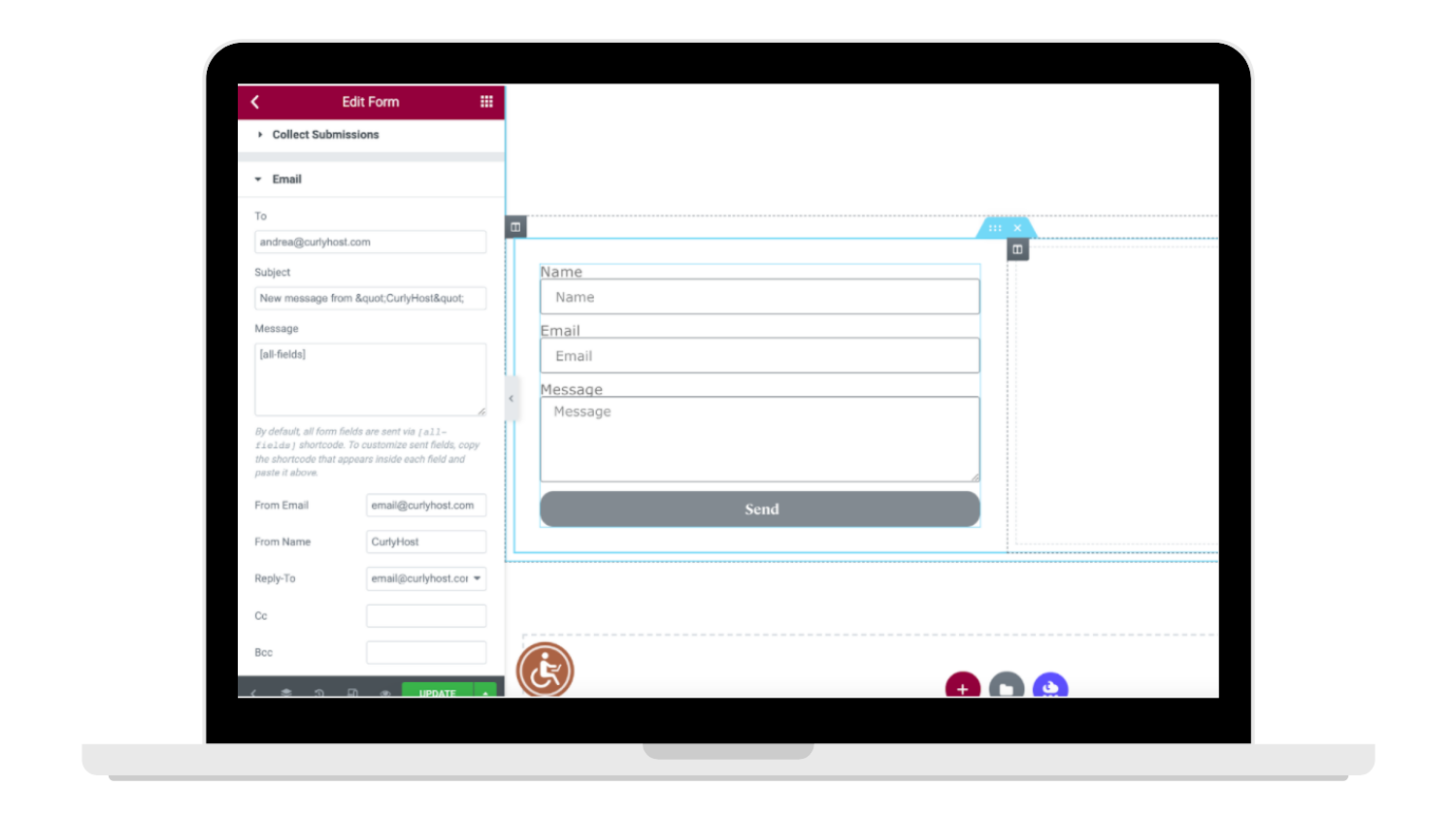
Hover over the form to highlight it in blue and click on the edit icon in the top right corner to open the editing options in the left hand side menu.
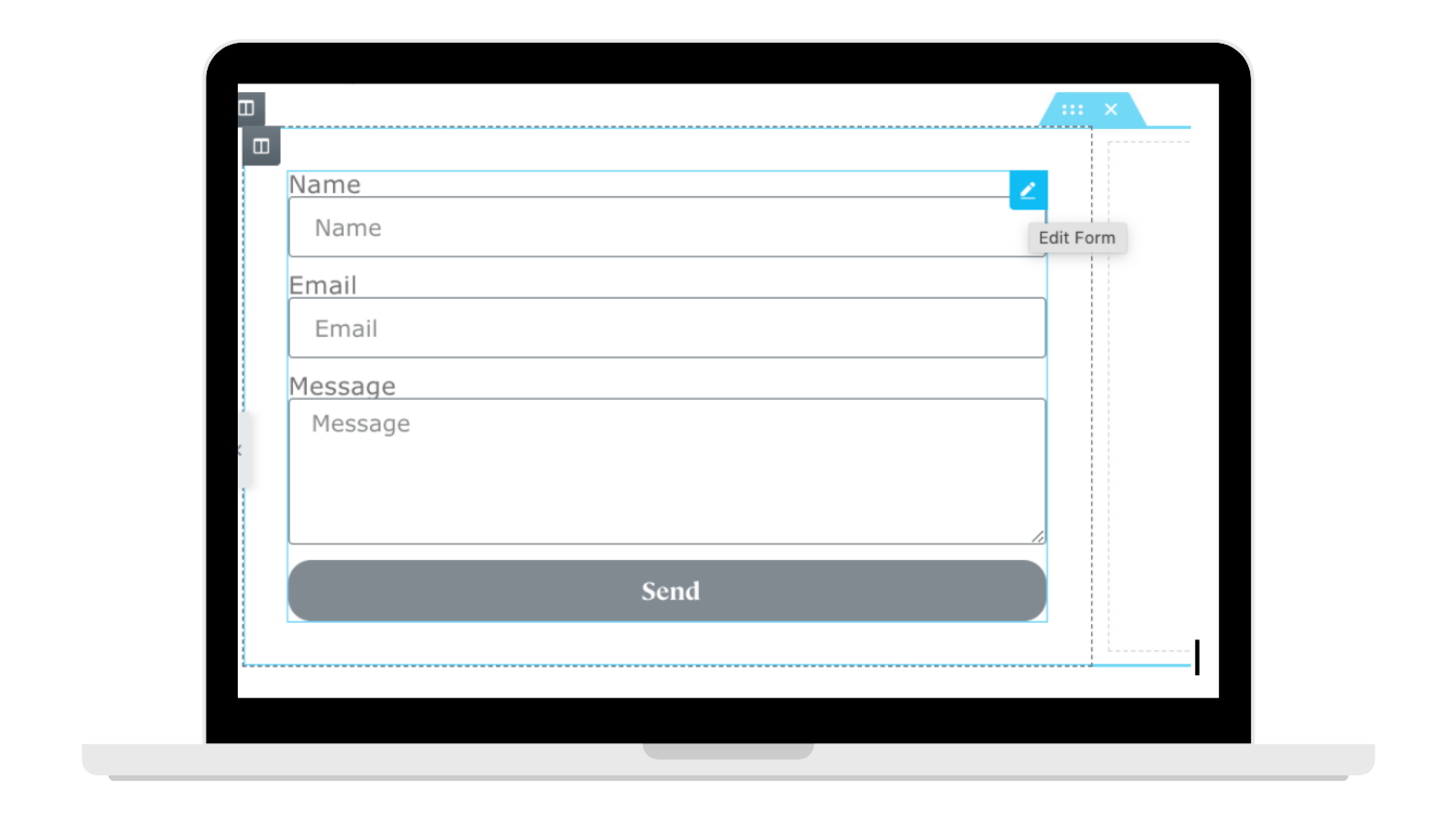
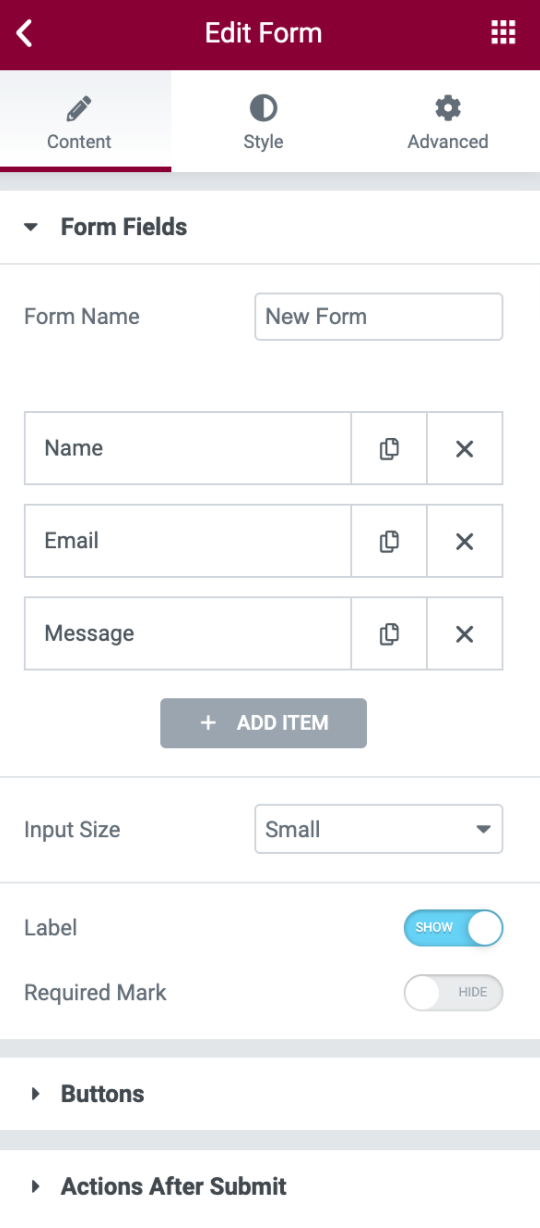
In the editing options in the left sidebar, scroll down to the ‘Email’ option and click to reveal more options.
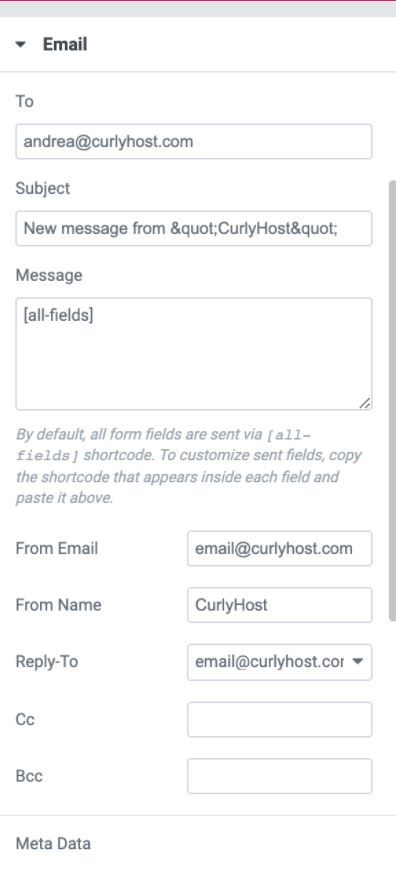
To update who gets the notification, change the email address in the ‘To’ input field. If you would like to add multiple emails to receive notifications, add more emails with a comma and a space between.

Gravity Forms

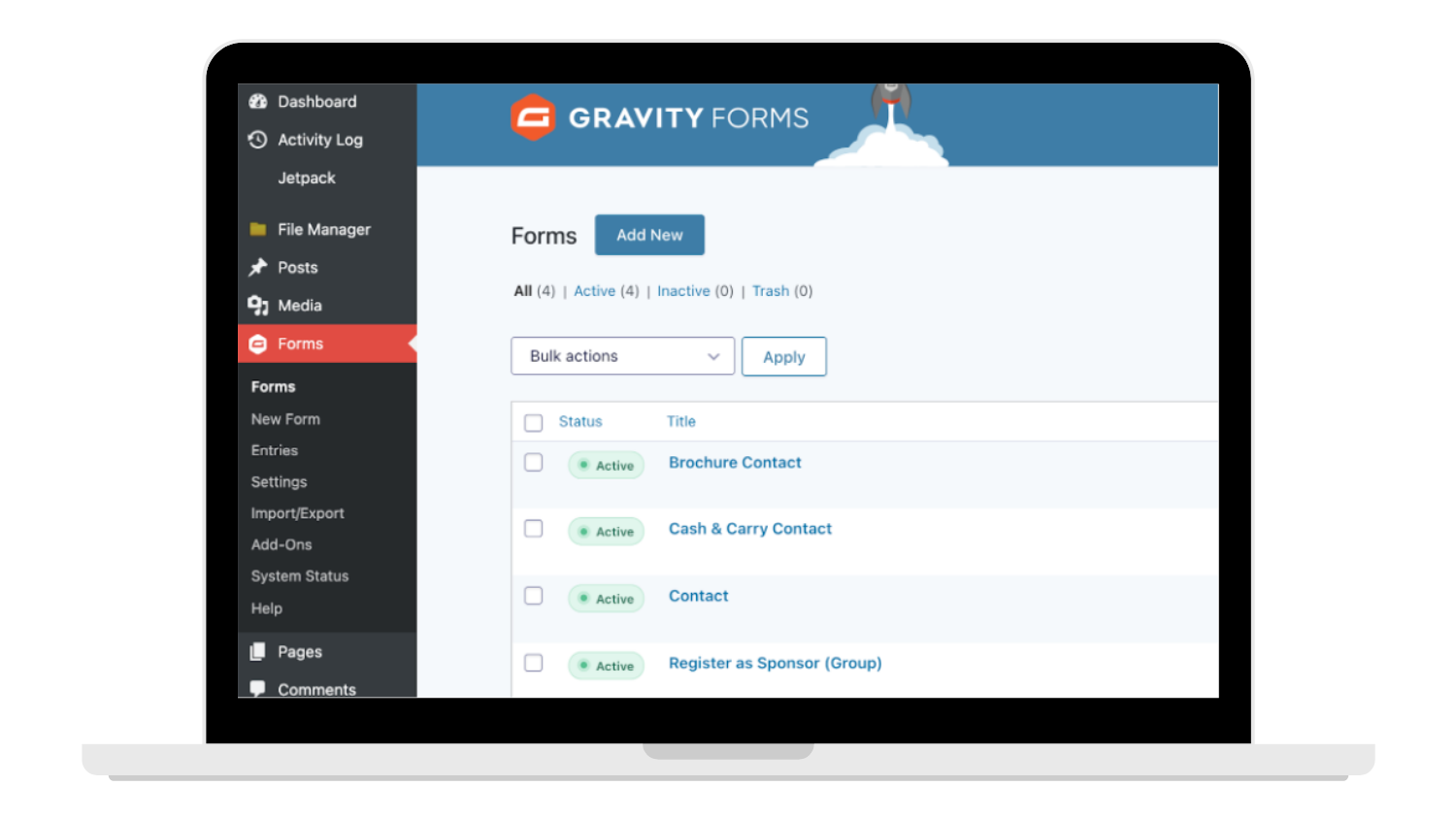
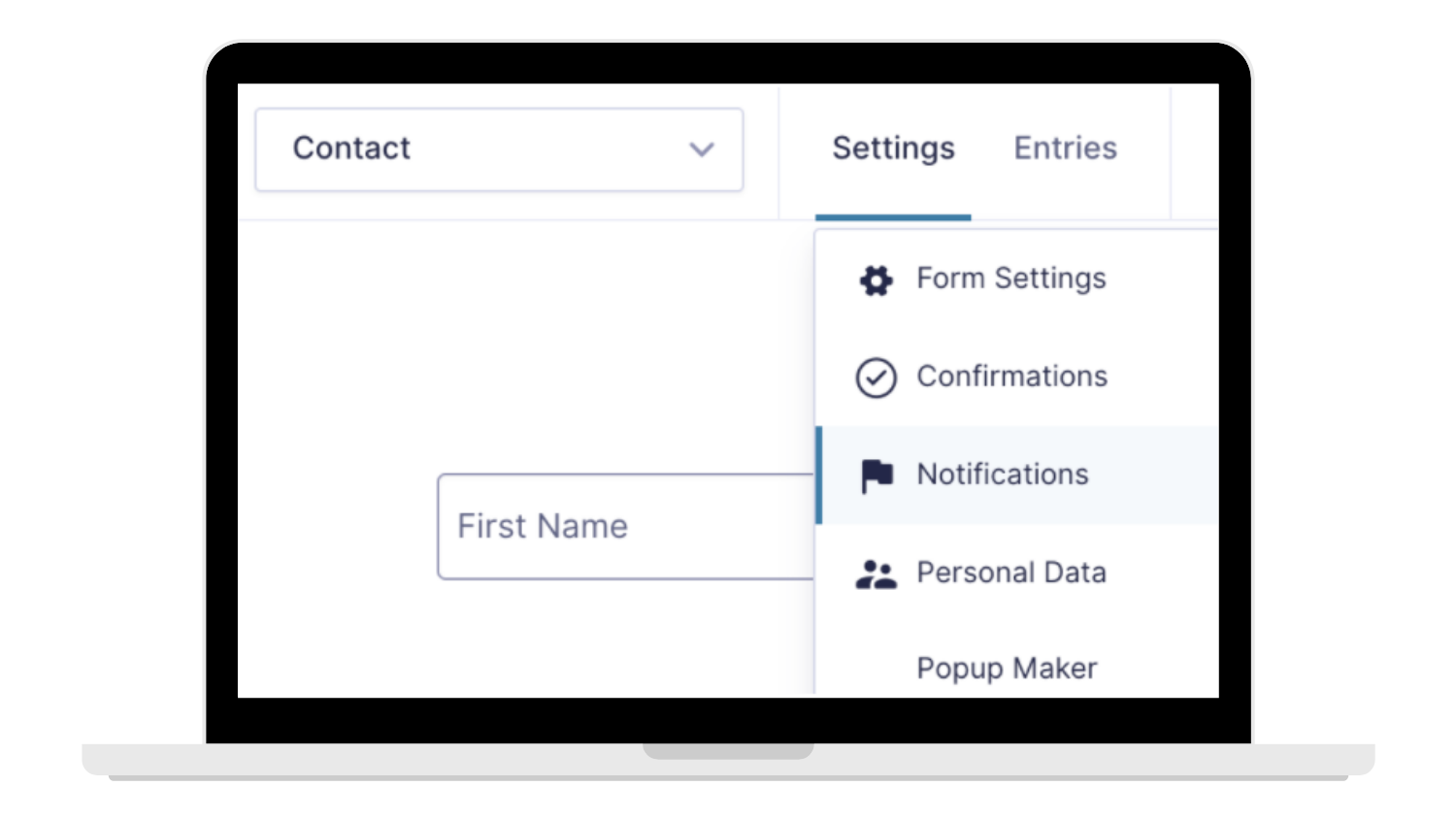
Click on ‘Admin Notifications.’
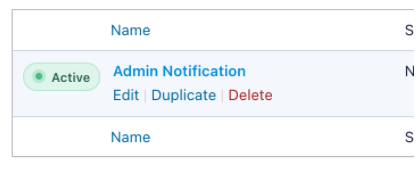

Once your edits are set, scroll to the bottom of the notification settings to click the ‘Update Notification’ button and save your changes.
